Oxford’s ‘Uncomfortable Oxford™ Tour’ is an eye-opening exploration of the university’s complex and often contentious legacy. Led by expert researchers, this thought-provoking 1.5-hour journey delves into the hidden histories and power dynamics that have shaped this renowned institution over the centuries. Participants will uncover the university’s formative years, examine its lasting impact on the local community, and gain a deeper understanding of Oxford’s role in shaping the city’s urban landscape. With knowledgeable guides at the helm, this tour promises to challenge preconceptions and offer a fresh perspective on the university’s ongoing grappling with its complex heritage.
Key Points
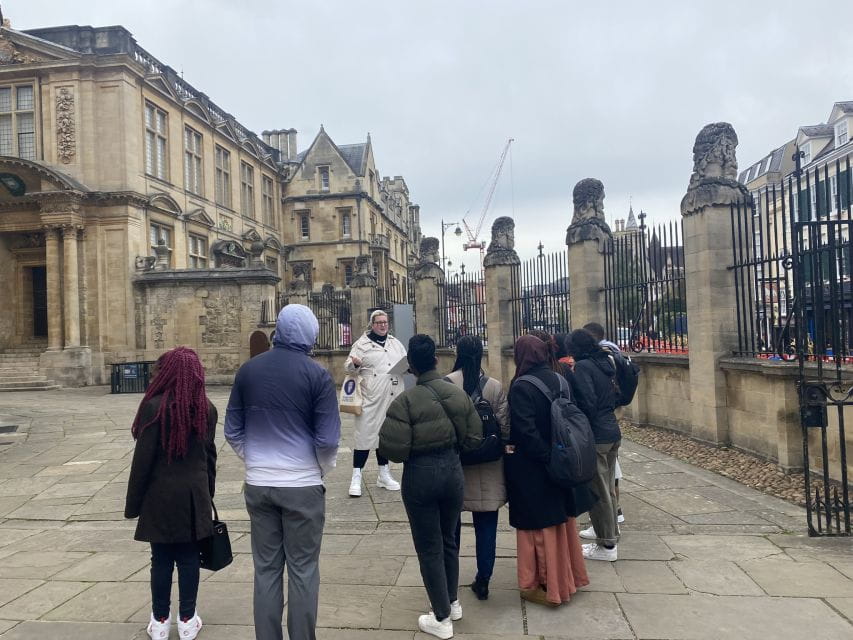
- The ‘Uncomfortable Oxford’ tour explores the complex power dynamics and tensions between the University of Oxford and the local community.
- The tour provides insights into the university’s formative years and lesser-known aspects of its legacy, including its impact on the city.
- Participants will visit iconic Oxford landmarks, such as the Carfax Tower, Bodleian Library, and Balliol College, to gain a fresh perspective on the institution’s history.
- Expert researchers guide the tour, delving into the university’s influence and its evolving role within Oxford’s urban landscape.
- The tour concludes at Bonn Square, a vibrant public space that reflects the intertwined relationship between the university and the city.
Tour Details

The Uncomfortable Oxford™ Tour lasts for 1.5 hours, beginning at the iconic Carfax Tower and concluding at Bonn Square. Guests can reserve their spot now and pay later, with the added convenience of free cancellation up to 24 hours in advance.
Throughout the tour, visitors will engage with expert researchers who explore the complex history of how the University of Oxford gained power and the tensions that arose between the town and gown.
Exploring Oxford’s urban landscape, guests will discover the lasting impact of the British Empire beyond the traditional narratives.
With an included souvenir sticker and a reading list compiled by University experts, this unique tour offers an insightful and thought-provoking experience.
You can also read our reviews of more tours and experiences in Oxford.
Tour Highlights
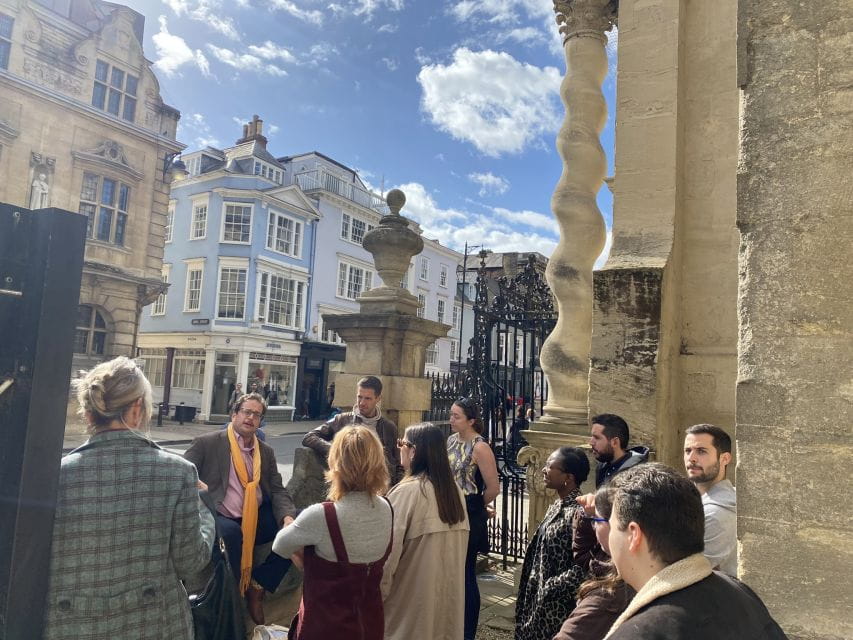
Engaging with expert researchers, guests explore how the prestigious University of Oxford amassed power over time and the persistent tensions between the university and the surrounding town. Exploring Oxford’s iconic sights, participants discover the profound impact of the British Empire beyond the traditional narratives, traversing the city’s urban landscape. Visitors also learn about the university’s formative years, uncovering lesser-known aspects of its history and legacy.
| Tour Highlights | Description |
|---|---|
| Discover Power Dynamics | Learn how the University gained dominance and clashed with the local community. |
| Uncover Hidden Histories | Explore Oxford’s past beyond the typical accounts, revealing new perspectives. |
| Engage with Experts | Interact with knowledgeable researchers to delve deep into the university’s impact. |
Itinerary Overview
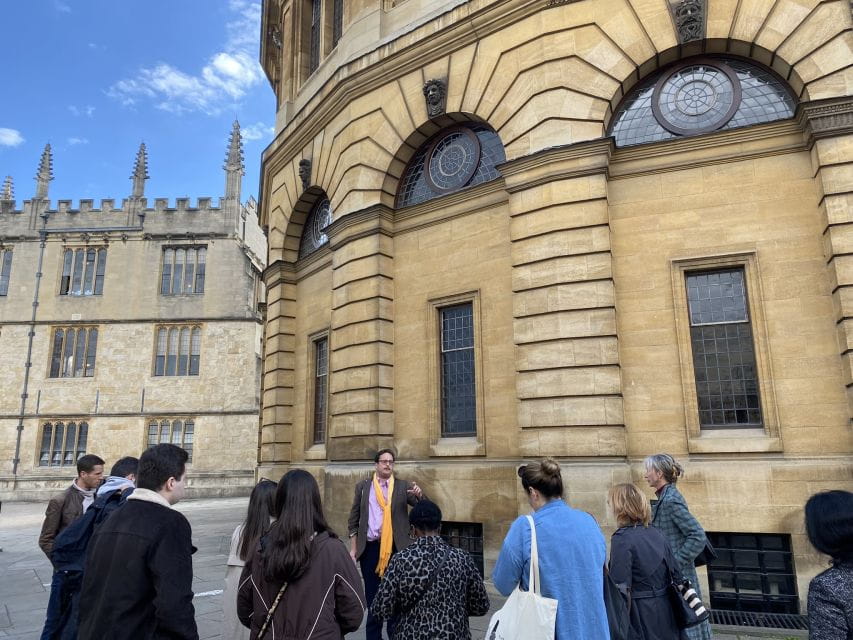
Tracing a captivating journey through Oxford’s storied past, the Uncomfortable Oxford™ Tour guides visitors on a thought-provoking exploration of the city’s iconic landmarks.
The tour begins at the Carfax Tower, a 14th-century landmark that offers a birds-eye view of the university’s historic core. Visitors then explore the University Church of St Mary the Virgin, Oriel College, and All Souls College, uncovering how these institutions amassed power and influence over the centuries.
The tour continues at the renowned Bodleian Library and the Sheldonian Theatre, exploring tensions between the university and the local townspeople. The journey culminates at Balliol College and the Faculty of History, providing a deeper understanding of Oxford’s complex legacy.
Throughout the 1.5-hour experience, the tour offers a fresh perspective on this renowned seat of learning.
Carfax Tower
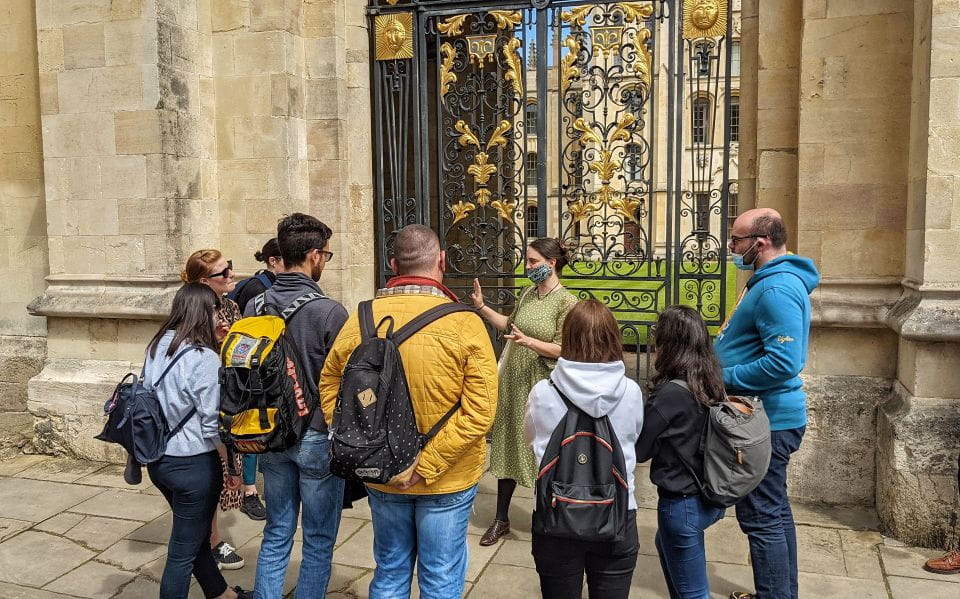
Marking the start of the Uncomfortable Oxford™ Tour, visitors gather at the Carfax Tower, a 14th-century landmark that commands a sweeping view over the university’s historic core. This iconic structure stands as a reminder of Oxford’s complex past, where tensions between the town and gown have ebbed and flowed for centuries. As the tour guide leads the group, they’ll explore the tower’s significance, exploring how it has witnessed the university’s rise to power and the ongoing struggles between the institution and the local community.
| Feature | Description |
|---|---|
| Height | 74 feet (23 meters) |
| Construction | Limestone and sandstone |
| Purpose | Originally part of the city’s defensive walls |
| Ownership | Owned and maintained by Oxford City Council |
Renowned Institutions
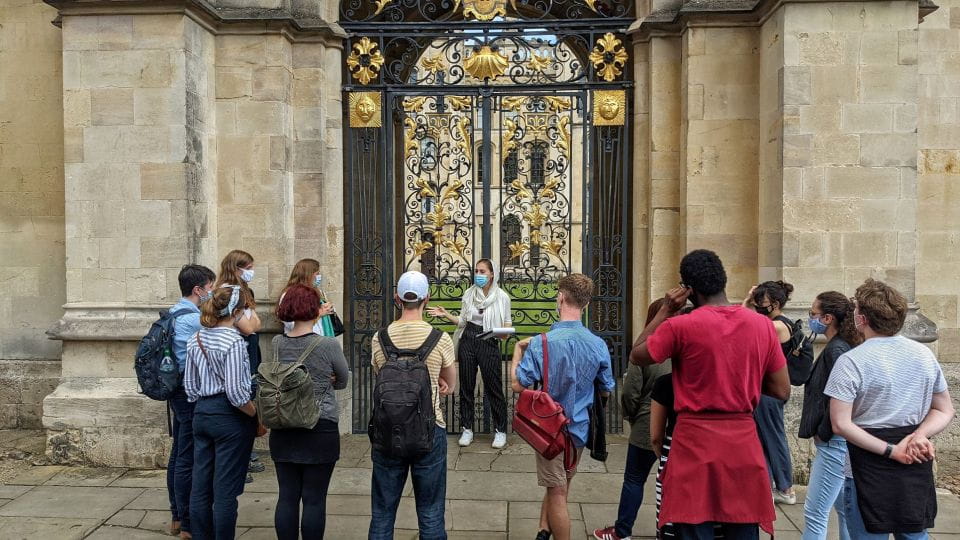
Amid Oxford’s historic streets, the university’s renowned institutions stand as beacons of knowledge, their rich histories intertwined with the city’s cultural tapestry.
From the hallowed halls of the Bodleian Library, home to millions of tomes and manuscripts, to the stately Sheldonian Theatre where scholars have gathered for centuries, these iconic buildings showcase Oxford’s enduring commitment to education and research.
Oriel College, with its striking architecture, has nurtured generations of thinkers, while All Souls College continues to uphold its unique tradition of intellectual discourse.
Beyond the traditional narratives, these institutions have grappled with complex legacies, inviting visitors to explore their multifaceted pasts and the university’s evolving role within Oxford’s dynamic urban landscape.
- Harry Potter Walking Tour of Oxford Including New College
- Oxford Harry Potter Insights Entry to Divinity School PUBLIC Tour
- Shared | Oxford Uni Walking Tour W/Opt Christ Church Entry
- 2-3 Hour Cycle Tour of Oxford
- Oxford Sightseeing Picnic River Cruise
- Cotswolds Villages Full-Day Small-Group Tour From Oxford
Bodleian Library
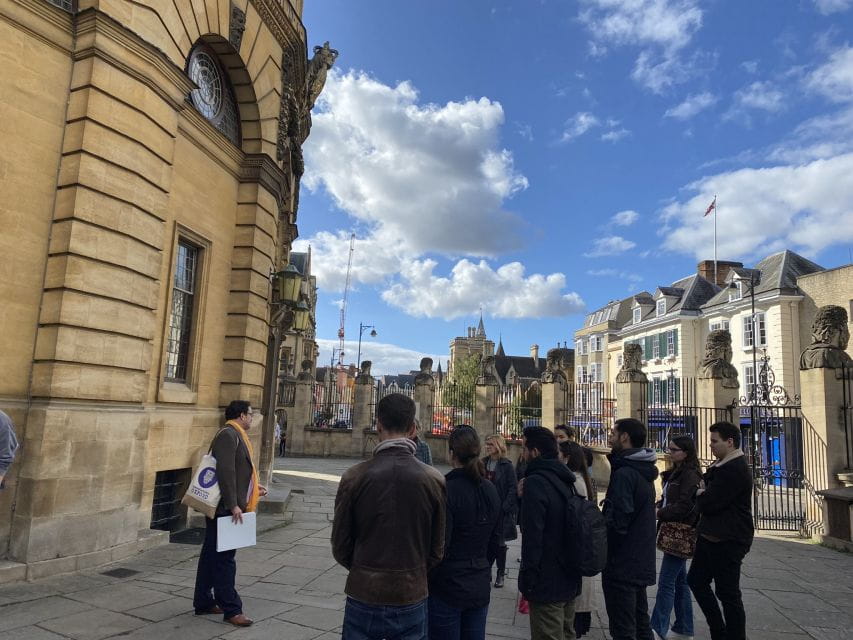
The Bodleian Library stands as the beating heart of Oxford’s scholarly tradition, housing millions of volumes that have nurtured generations of thinkers and inspired countless discoveries. This iconic institution boasts an impressive collection, from ancient manuscripts to modern digital archives, all meticulously curated to support the university’s world-class research and teaching. As visitors explore its grand reading rooms and winding corridors, they’ll uncover the library’s storied past, marked by battles for intellectual freedom and the preservation of knowledge. With its imposing architecture and rich history, the Bodleian Library remains a remarkable testament to Oxford’s enduring commitment to academic excellence.
| Iconic Collection | Scholarly Tradition | Preservation of Knowledge |
|---|---|---|
| Millions of volumes | Generations of thinkers | Ancient manuscripts |
| Ancient manuscripts | Countless discoveries | Modern digital archives |
| Modern digital archives | World-class research | Intellectual freedom |
| Meticulously curated | Teaching excellence | Enduring commitment |
| Grand reading rooms | Storied past | Impressive architecture |
Balliol College
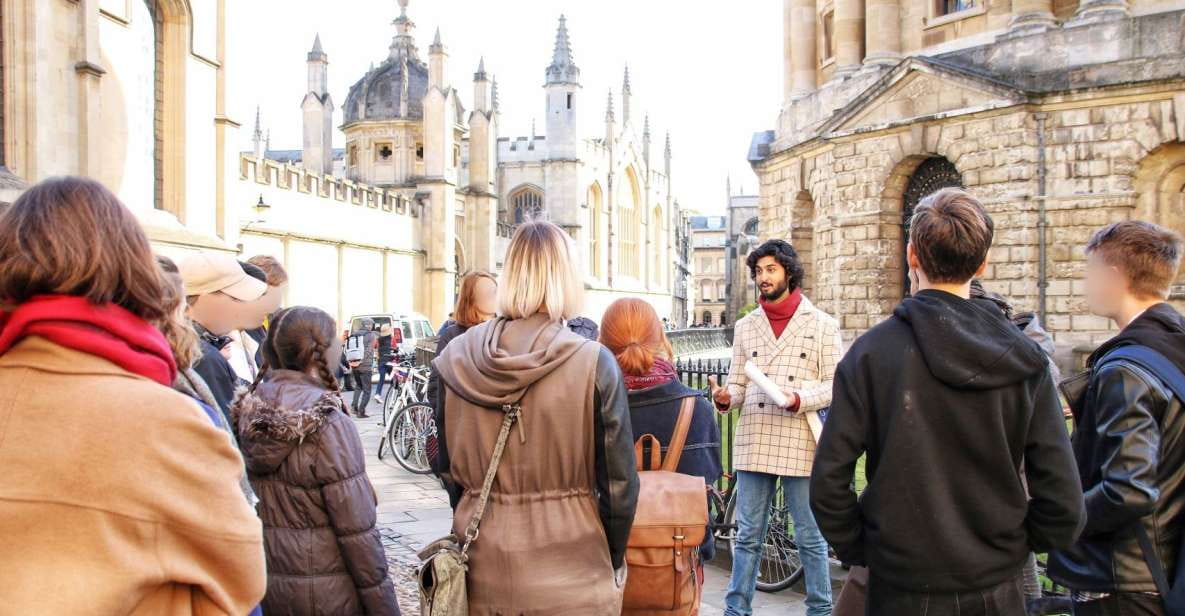
Nestled within Oxford’s historic heart, Balliol College stands as a venerable institution that has nurtured some of the world’s most influential thinkers and leaders over the centuries.
Founded in 1263, this esteemed college boasts a rich legacy, counting among its alumni remarkable figures like philosopher John Wycliffe, British Prime Ministers such as Harold Macmillan, and renowned poet Aldous Huxley.
As visitors explore Balliol’s striking architecture and serene quadrangles, they’ll uncover the college’s complex role in shaping Oxford’s intellectual landscape and its intertwined relationship with the city.
From its early tensions with local townsfolk to its pivotal contributions to academic discourse, Balliol College offers a captivating window into Oxford’s multifaceted past and present.
Bonn Square
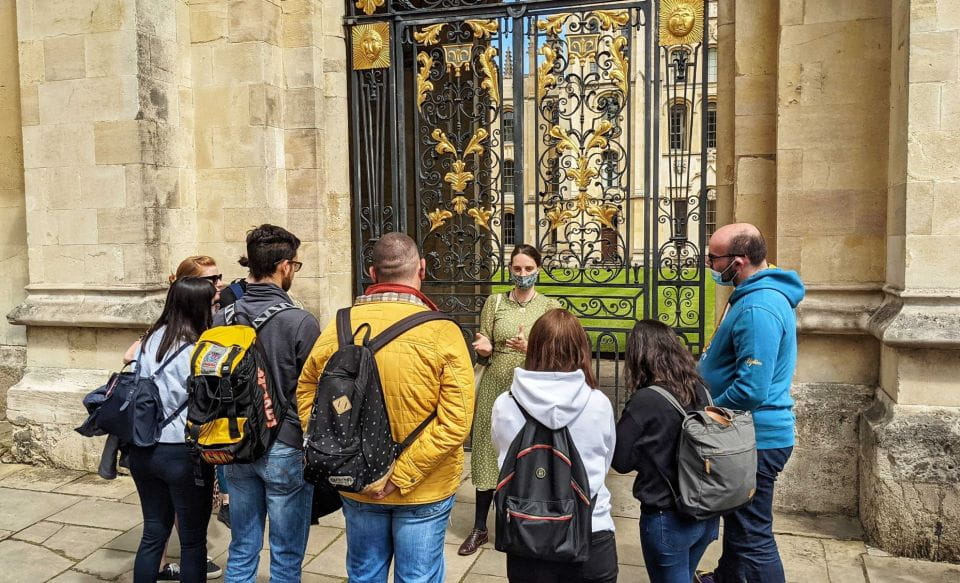
As visitors bid farewell to the hallowed halls of Balliol College, they’ll find themselves drawn to Bonn Square, a vibrant public space that serves as a lively hub in Oxford’s urban landscape.
This bustling plaza, named after the German city of Bonn, has long been a gathering point for locals and travelers alike, offering a welcomed respite from the city’s historic charm.
Bonn Square buzzes with activity, from the chatter of cafe patrons to the lively busking performances that captivate passers-by.
Surrounded by a mix of modern and historic architecture, the square invites exploration, whether it’s admiring the striking facade of the Town Hall or simply soaking in the energetic atmosphere that makes Oxford’s cityscape truly distinctive.
Frequently Asked Questions
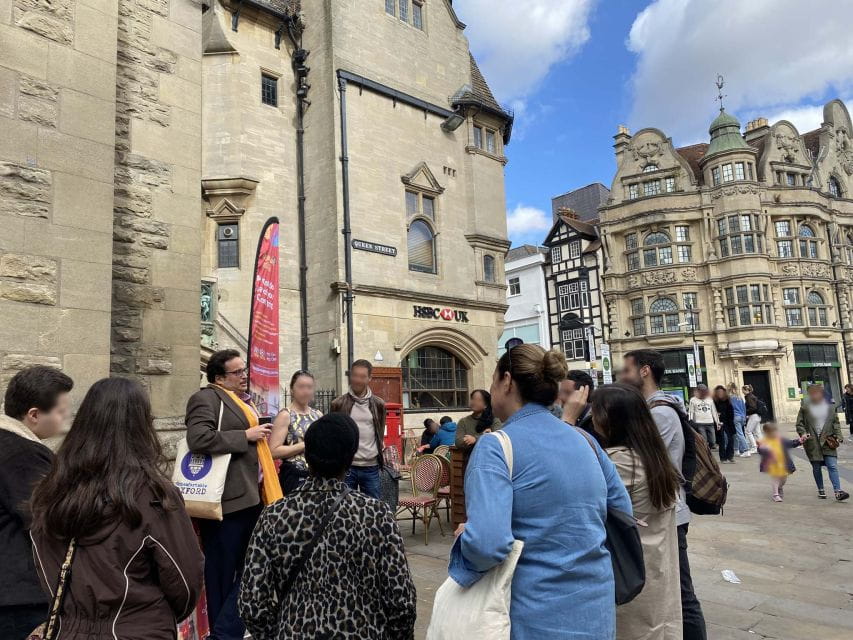
What Is the Purpose of the "Uncomfortable Oxford" Tour?
The purpose of the ‘Uncomfortable Oxford’ tour is to provide a thought-provoking exploration of the university’s complex history. It delves into tensions between the town and gown, challenging traditional narratives and encouraging visitors to consider Oxford’s nuanced role in the British empire.
How Does This Tour Differ From Traditional Oxford City Tours?
This tour provides a unique perspective on Oxford, delving into lesser-known narratives and exploring the tensions between the university and the local community. It offers an insightful alternative to traditional city tours, promising a thought-provoking and engaging experience.
What Controversial Topics Are Covered During the Tour?
The Uncomfortable Oxford™ Tour delves into controversial topics like the complex tensions between the university and local community, as well as Oxford’s historical role in the British Empire and how it shaped the city’s urban landscape.
Can Students From the University Participate in the Tour?
Students from the University of Oxford are welcome to participate in the tour. They’ll gain new perspectives on the university’s history and engage with expert researchers who challenge traditional narratives about Oxford’s past.
Is This Tour Suitable for Young Children?
The tour is recommended for ages 12 and older, so it may not be the best fit for young children. The content and itinerary can be adapted for accessibility, but the tour’s focus may be more suitable for older participants.
Recap
The ‘Oxford: The Uncomfortable Oxford™ Tour’ offers an eye-opening exploration of the university’s complex past.
Participants will explore hidden histories, examining Oxford’s contentious relationship with the local community and its lasting impact.
Led by expert researchers, the thought-provoking tour provides a fresh understanding of the institution’s formative years and its ongoing grappling with its contested legacy, leaving attendees with a deeper appreciation for the nuances of this renowned seat of learning.
More Tours in Oxford
- Oxford: University & City Walking Tour with Recent Graduate
- FRENCH Private Bespoke tour University and or Harry Potter
- Oxford: Jericho and Port Meadow Guided Walking Tour
- Oxford: Solo Traveller Private Tour
- SPANISH Private Bespoke tour University and or Harry Potter
- Oxford: The Original Uncomfortable Oxford Tour
More Tour Reviews in Oxford
Not for you? Here's more things to do in Oxford we have recnetly reviewed
- Oxford Bike & Walking Tour: 3 hrs of City, Colleges & Canal.
- Oxford: Ashmolean Museum Guided Tour with Art Historian
- Oxford: Ashmolean Museum Tour – by Uncomfortable Oxford
- Oxford: Junkyard Golf Tickets for 9 or 18 Holes
- Oxford: City and University Tour, including college entry
- Oxford: Haunted Oxford Tour – by Uncomfortable Oxford
- From Southampton: Oxford and Blenheim Palace Private Tour
- Oxford: City and Universities Express Tour & Audio Guide
- Oxford: Tolkien, Lewis and Alice Walking Tour with College
- Oxford: Town & Gown Walking Tour
- Oxford University Walking Tour
- Oxford: Christian Heritage Walking Tour
